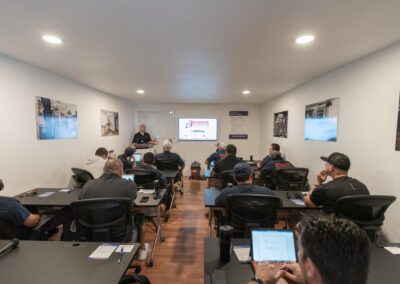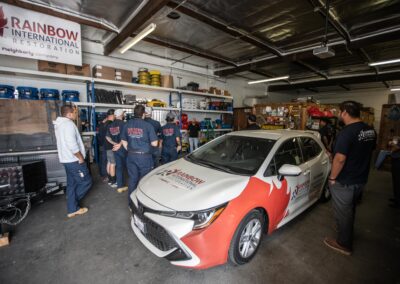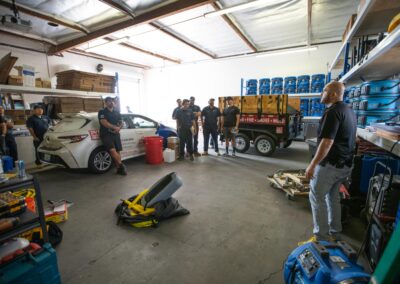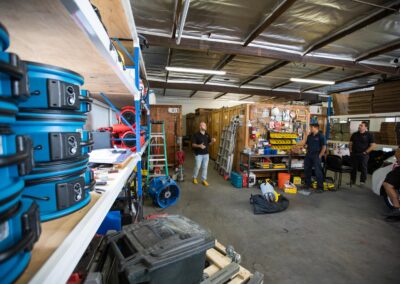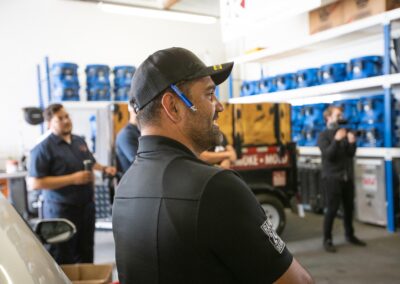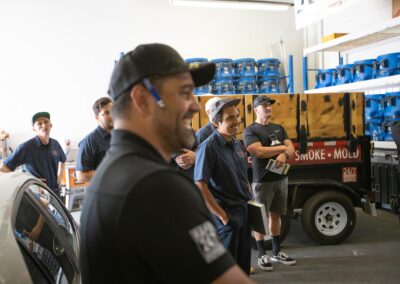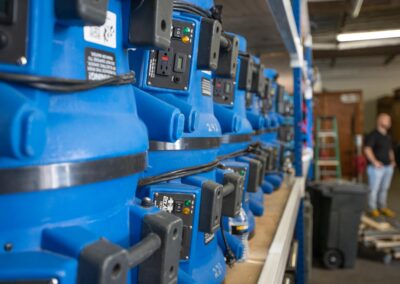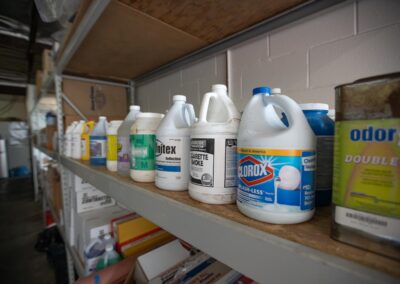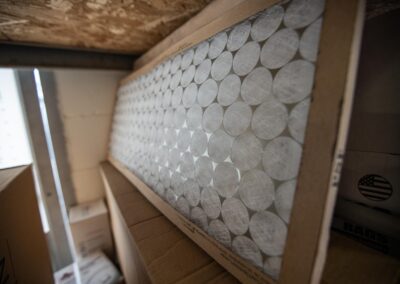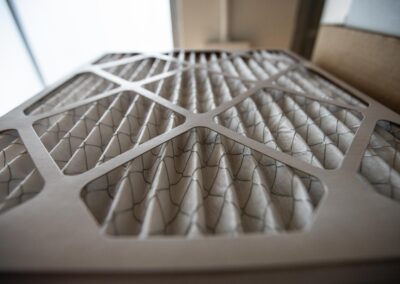Rainbow International Restoration Training Day
Our Rapid Response Team had the opportunity to attend a full training to better identify the needs of restoration services. We attended Rainbow International Restoration in Cerritos, CA. As plumbers, we get calls when water damage is occurring, a flood happens or a broken pipe is in your walls. All of the previously listed plumbing issues can lead to further damage including mold and mildew. Because of this, we have partnered up with Rainbow International Restoration to help our customers after any sort of water damage has occurred and prevent future problems.
What Kind of Damage Can Mold Have?
Mold can grow quickly after water damage, making the restoration process even harder. Even a small amount of moisture, if not handled right away in the correct matter, can turn into a large mold infestation.
Mold Spores — tiny airborne particles that are not visible to the naked eye exist everywhere in nature, and they can grow into visible mold after a water damage occurrence. Exposure is extremely dangerous for those who have breathing problems caused by allergies or asthma. Ultimately, all it takes is getting rid of the moisture prior to mold beginning its growth phase.
Most of the time, mold will often times develop after a flood. As a result, you might also have a moisture problem. According to the Environmental Protection Agency (EPA), mold typically takes 24 to 48 hours to grow after a flood if the ideal conditions are satisfied.
Nonetheless, it depends on:
- The type of surfaces and materials
- Amount of moisture
- The temperature. Indoors
Mold typically develops faster on softer surfaces in darker, warmer (70 degrees or more), and more humid environments. The chance for mold spores to spread from 1 area to another also goes up as a result. These microorganisms can easily fill the air and spread throughout your home, affecting more and more areas and endangering your health with each passing hour.
In addition, mold spores that begin to purge on surfaces over 2-4 hours will generally become visible 18 to 21 days after a flood. This will happen if nothing else has been done in order to wash the water and restore the affected surfaces.
It’s because of these reasons that it’s crucial to deal with water and moisture issues as soon as you have a flooding episode. The quicker the cleanup and drying take place, the smaller the chances of severe mold development.
If you have a good amount of water at the house, using a local Water Damage Restoration Company may be your best bet to get your home back in order as fast and as cost-efficiently as possible. Restoration companies have the right equipment that’s needed to dry out your place right away.
This form of water is very hazardous and nicely handled by trained and certified water damage cleanup professionals. Furthermore, if mold has started growing on your home following a flood, it’s very likely that there’s more mold hiding in hidden areas, such as walls. Mold removal experts have the needed tools to find hidden mold in areas where the eyes can’t physically see.
What’s the Difference Between Mold & Mildew?
We all understand that mold and mildew are forms of fungus, but what else could they have in common? First of all, both mold and mildew grow and flourish in damp, humid places-either indoors or out.
For the most part, mildew generally tends to be powdery or downy and has a flat growth pattern. Powdery mildew is white, then turns yellow, then turns black. Mildew is yellow, then turns brownish.
Health Risks
If people and animals are exposed to mold, unfortunately, it can create moderate to drastic health issues. Issues can happen such as nasal issues, coughing, sore throat, migraines, itching, rashes, fatigue, and much more.
In addition, mildew vulnerability can cause comparable issues, but perhaps not the same amount. Usually, mold symptoms are restricted to coughing, headaches, sore throat, and trouble breathing. Furthermore, mold has the ability to grow on any organic surface within a home. If mold growth gets severe enough, it can rot the material it’s growing on and cause severe damage. Mildew sticks mainly to plants and can sometimes kill them if not properly removed in time.
The Way to Prevent Them
This is another area where mold and mildew are very comparable. You can help prevent them by keeping your home as dry as possible. This typically means keeping leaks repaired, ventilating your appliances, and following tips to maintain moisture out of the air. It’s not always a great idea to try and eliminate mold yourself, especially if the area you are working in is not that well-ventilated.
If you are willing to do the job yourself, it is highly suggested that you wear a facial mask to avoid breathing spores, and rubber gloves to keep your skin safe. Overall, it is really best to have a professional handle your mold situation to be able to avoid any serious health issues.
Experts will clearly understand just how to take care of the mold and mildew, and the best way you can tell the difference between them. A majority of the time, it is not so much about removing mold and mildew as it is bringing it into an acceptable amount for humans to be around.
If you have any questions, call our 24/7 Rapid Response Team at 949-328-6002 or email us at [email protected] – If you want more information online, please visit us @https://www.OlsonSuperior.com
For industry insights, announcements, and tips make sure to follow our blog at: olsonsuperior.com/blog
